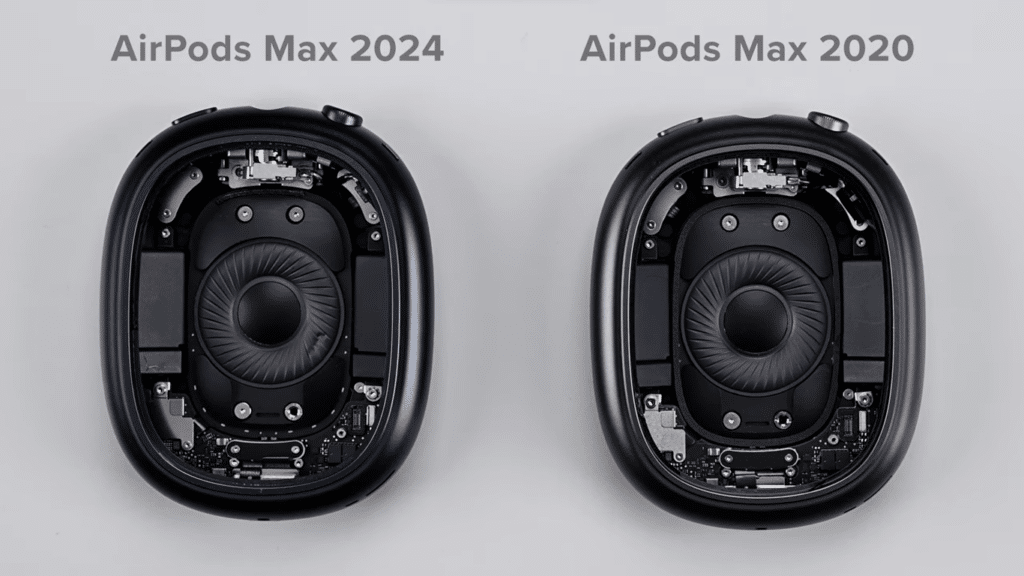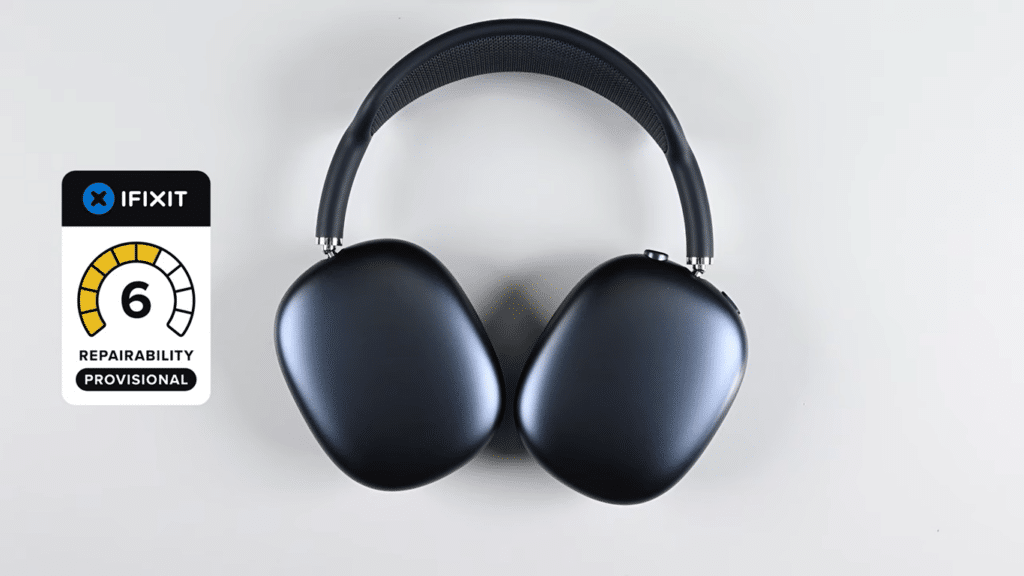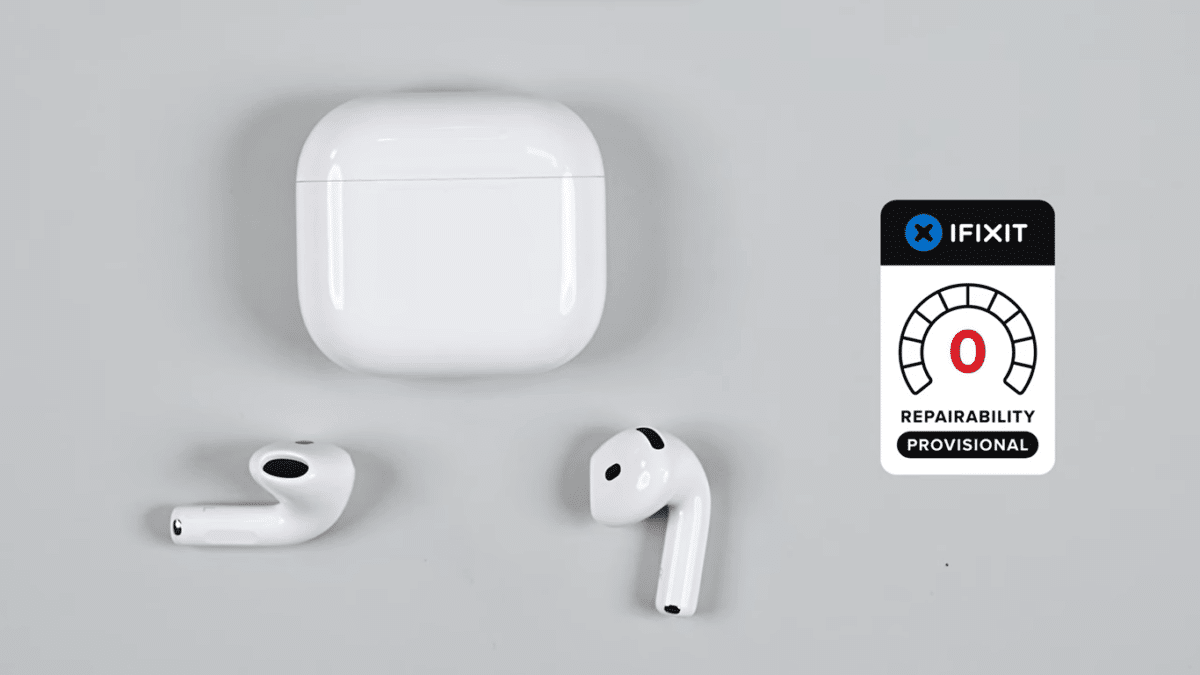iFixit recently gave consumers a detailed look inside Apple’s newest entry-level AirPods 4 and the updated AirPods Max. The teardown results reveal minimal internal changes for the AirPods 4 compared to previous models and a continued lack of repairability for both products. Despite Apple’s ongoing advancements in hardware design, the repairability score for these devices remains disappointing, underscoring a trend that has persisted for years.
According to iFixit, the AirPods 4 are nearly identical in internal structure to the AirPods 3. The familiar design choices, including an abundance of adhesive and intricate, compact components, once again make disassembly nearly impossible without causing significant damage. As with previous generations, the AirPods 4 scored a dismal 0/10 on iFixit’s repairability scale, marking them as one of the least repairable products on the market. A key pain point highlighted is the battery in the charging case, which remains inaccessible to the average consumer, a notable disadvantage when compared to competitors such as Samsung and Sony, who have integrated more user-friendly battery replacement options in their products.

Interestingly, the teardown of the non-ANC (active noise cancellation) AirPods 4 models revealed that the only significant difference between the ANC and non-ANC variants is the presence of a single outward-facing microphone. Beyond this, the internal structure and components remain largely the same, reinforcing the limited scope of innovation in terms of internal hardware design between the two versions. Even though ANC can be a major selling point for users, from a repairability standpoint, it makes little difference.
The charging case for the AirPods 4 without ANC houses a 345 mAh battery, a specification that also hasn’t changed from the AirPods 3. This is particularly disappointing given that users might have hoped for improvements in battery longevity or more efficient power management in the latest iteration. Instead, the similarities in battery design point to a stagnant approach when it comes to internal hardware innovations.
When turning to the revised AirPods Max, iFixit’s teardown reveals that the USB-C variant offers no internal changes beyond the port transition from Lightning to USB-C. This shift was expected given Apple’s broader move toward USB-C across its lineup, yet the lack of additional internal upgrades is a letdown for those who were hoping for more significant enhancements in Apple’s premium headphones.

Aside from the USB-C port, the AirPods Max remain functionally and structurally unchanged from the 2020 model. The teardown demonstrated that the same complex entry process into the ear cups persists, and no noticeable improvements have been made to the repairability of the components inside. This includes the battery, which still requires an arduous process to access, resulting in a similarly modest repairability score of 6/10, the same as the original AirPods Max.

It’s also worth noting that iFixit expressed frustration about the lack of available replacement parts and repair manuals for the AirPods Max, despite their premium price tag. At $500, one would expect the headphones to be more accessible in terms of repairs or at least supported by an official repair ecosystem. Yet, Apple’s tight control over parts and documentation remains an obstacle for those hoping to extend the lifespan of their devices. This is especially problematic for environmentally conscious consumers, who are increasingly looking for more repairable and sustainable tech products.
While the external shift to USB-C may provide a bit more convenience for users who are now accustomed to the standardized port across multiple devices, the internal limitations of the AirPods Max are a clear signal that Apple is not prioritizing repairability with this update. The continued reliance on glued components and intricate, hard-to-reach parts makes the AirPods Max challenging to disassemble, even for experts at iFixit.
The teardown process itself is a testament to how far Apple is willing to push design at the expense of repairability. For the AirPods 4, iFixit had to use excessive heat and prying tools to even begin the process of disassembling the earbuds and their charging case. The adhesive used throughout the device presented major challenges, making it almost impossible to reach key components such as the battery without rendering the entire device useless.
The AirPods Max, though slightly easier to open than the AirPods 4, still required significant effort to dismantle due to the continued use of glue, particularly around the USB-C port. Although the teardown process didn’t destroy the headphones entirely, the absence of any notable internal improvements, apart from a minor tweak to the charge port section, left iFixit disappointed.
iFixit’s teardowns are always a sobering reminder of the balance Apple strikes between sleek design and repairability, and the latest AirPods lineup is no different. Apple’s decision to prioritize aesthetics and compact design over modularity and repair access is a clear message to users: these products are not meant to be repaired; they are disposable. In an era where sustainability is becoming a key concern for both consumers and manufacturers, Apple’s approach to repairability with its AirPods continues to lag behind its competitors.
The AirPods 4, which are expected to be sold by the millions, contribute to a growing pile of e-waste. As iFixit notes, despite the high-quality experience the AirPods provide, their short lifespan and lack of repair options make them a problematic device in terms of sustainability. Similarly, the AirPods Max, which are priced at a premium but offer no substantial improvements in repairability, reinforce this throwaway culture that many tech giants, including Apple, have come under fire for.
Check out the full teardown below:
Subscribe to our email newsletter to get the latest posts delivered right to your email.

